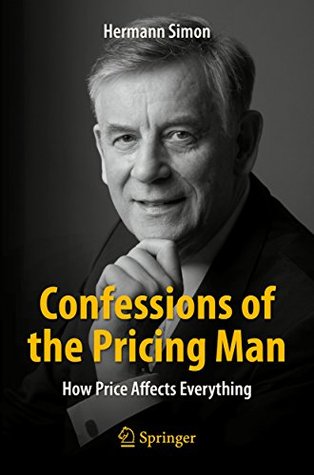More on this book
Community
Kindle Notes & Highlights
Read between
October 6 - October 26, 2019
Price is the most powerful indicator of a good’s scarcity
Changes in prices often have a delayed effect,
“boom-and-bust cycle”
The problem is that governments rarely rely on market signals to set these prices. These “prices” are political decisions, not economic ones.
The lesson here is that to the greatest extent possible, one should leave price setting to markets themselves and let events run their course.
Nonetheless, some types of government involvement do ensure that competition and price mechanisms operate smoothly and fairly.
Tighter antitrust regulation contributes to better price competition
“The single most important business decision in evaluating a business is pricing power
can’t live without it.
Pricing power determines whether a supplier can achieve his or her desired price s. It also determines the degree to which a brand can earn a premium price
it pays for top managers to make a strong and serious commitment to better pricing and to invest time and energy into this endeavor.
What Money Can’t Buy: The Moral Limits of Markets,
This creep across moral and ethical boundaries is one of the most significant economic trends of our time.
behavioral economics
Price plays a central role in behavioral economics,
Thinking Fast and Slow.
prices signal status and social prestige and therefore offer the buyer an additional level of psychosocial utility.
This is known as the Veblen or “snob” effect.
you need to know what your demand curve looks like, the more precisely, the better.
How does price end up serving as an indicator of quality?
Experience:
Ease of comparison:
A “ cost-plus ” mentality:
Price is likely to serve as an indicator of quality when buyers are uncertain about a product’s underlying quality.
Price differences really can create significant placebo effect s.
“anchoring is an exceptionally robust phenomenon that is difficult to avoid.”
How a price looks in relation to other prices can have a strong influence
Likewise, the number of alternatives in an assortment can exert a strong influence on customers’ choices.
When buyers know neither the price range of a product category nor have any special requirements (e.g., high quality, low price), they gravitate toward a price in the middle of the range.
The less a buyer knows objectively about the quality of the products and prices in an assortment, the stronger the pull of the “magic of the middle” will be.
A Profit-Generating Product No One Ever Buys
One of the cleverest tricks to boost sales is to create the perception of scarcity
a hoarding effect.
that the introduction of additional alternatives can significantly increase sales and shift demand toward higher priced products.
thing that changed was the structure of the offering itself.
is the “magic of zero.”
A price threshold
is a price point which triggers a pronounced change in sales whenever it is crossed.
That is why many prices lie just under those thresholds, very often ending in a 9.
The most important argument for the existence of odd prices is that customers perceive the digits in a price with decreasing intensity as they read from left to right.
According to this hypothesis, customers underestimate prices which lie just under round numbers.
price elasticity—which
is defined as the percentage change in volume, divided by the percentage change in price.
My own findings show that it makes no sense to set prices at $9.90 or $9.95. If you want to remain below a price threshold, then you should
set your price as close to the threshold as possible, which means $9.99 in this case.
The law of declining margi...
This highlight has been truncated due to consecutive passage length restrictions.
says that the marginal utility of a product declines with each additional ...
This highlight has been truncated due to consecutive passage length restrictions.
the utility of the first $100 you win or earn is greater than your utility from the next incremental $100.
The real breakthrough message from prospect theory is this: for any absolute gain or loss of identical size, the negative utility from the loss is greater than the corresponding positive utility from the gain.
consequence: prospect theory shows that it is not only the net utility that matters to an individual, but how that net utility comes about.


